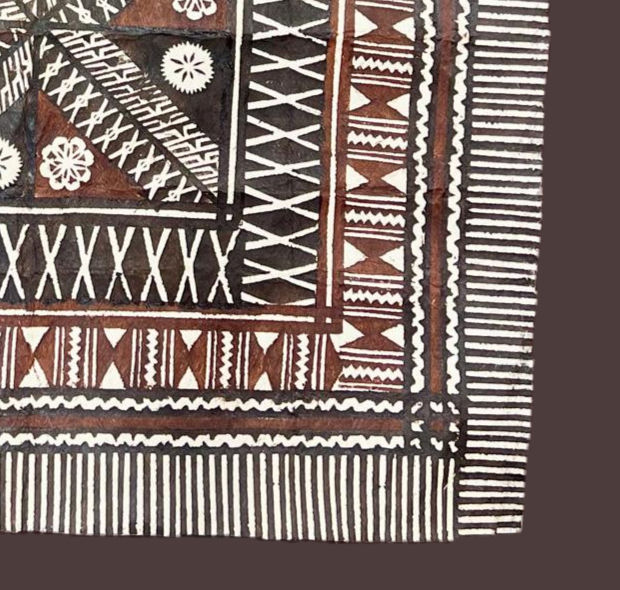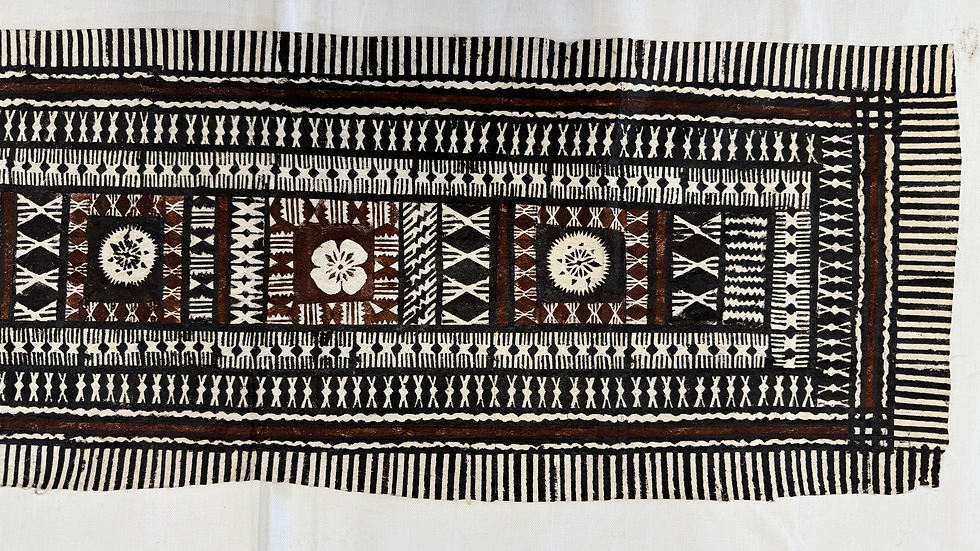Paddle Hawaii By Keola Sequeira
Na Hoe Hulu O Maui by Levan Keola Sequeira, Hawaii
LeVan Keola Sequeira was a revered Hawaiian master carver and canoe builder, celebrated for his dedication to preserving and perpetuating Hawaiian cultural traditions. Born on February 7, 1945, in Honolulu, he spent his formative years in Lahaina, Maui, where he was deeply influenced by his family and community. This example of Sequeira's work is of a canoe paddle with expertly inlaid vertical lines running down it's length. A plaque applied to the back reads 'Na Hoe Hulu O Maui. Name: Ka ua Oluolu o Napili The Gentle Rains of Napili. By: Levan Keola Sequeira". On stand H1660mm, paddle L1630mm W310 D45mm
LeVan Keola Sequeira
From a very young age—around four or five years old—LeVan Keola Sequeira was always creating and making things with his hands. His favorite tool (or "fool," as he fondly called it) was his pocketknife. With it, he fashioned nearly anything his imagination could conjure.
He received six years of schooling at the Kamehameha Schools in Oʻahu, where his shop and art teachers, Wright Bowman Sr. and Fritz Alplanalp, taught him the proper use of tools, as well as carpentry, woodcarving, and art. The lessons they instilled remained with him throughout his life.
After returning from service in the Air Force in 1969, Sequeira resumed carving. With his limited but growing knowledge of art and carpentry, he designed and built his own home, following the principles of the Hawaiian chief’s longhouse.
His path crossed with that of Sam Kaai, and their discussions about Hawaiian culture and its artistic expressions sparked a lifelong quest for knowledge—especially regarding canoes and carved forms such as ki‘i (images), weapons, calabashes, and more. He sought this knowledge from elders, museums, caves, and prayer.
He came to understand that the Hawaiians were masterful in their use of "form." Rather than embellishing surfaces with intricate carvings, they expressed beauty through the form, finish, and feel of their pieces. This insight came after years of study, experimentation, critique, and spiritual guidance—often through dreams, intuition, and deepening spiritual understanding.
Over the years, Sequeira built large canoes, carved calabashes, and created more than forty ki‘i. Through these experiences, he felt he had glimpsed the spirit and skill of the master carvers of old, and he cherished the knowledge they had passed on to him.
Later in life, Sequeira discovered that he was of one-half Japanese ancestry—an influence that, he felt, contributed to the precision and discipline reflected in his work.
The cultural and artistic teachings of the Hawaiian tradition profoundly shaped his contemporary carvings and creative expressions. For these gifts and experiences, Sequeira considered his life deeply blessed.































